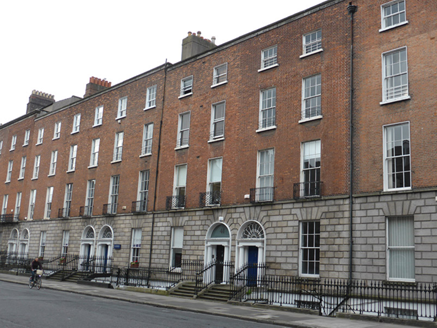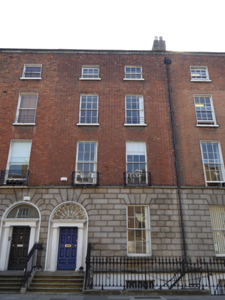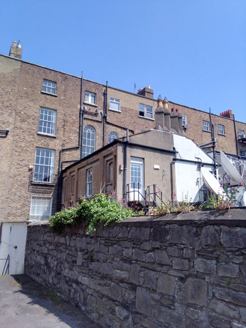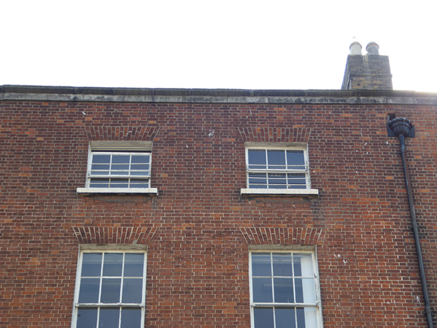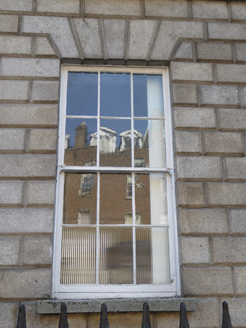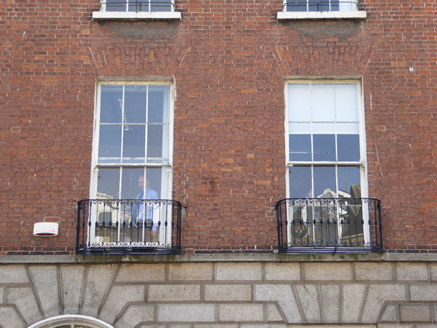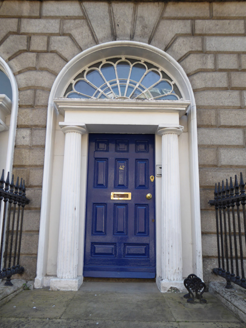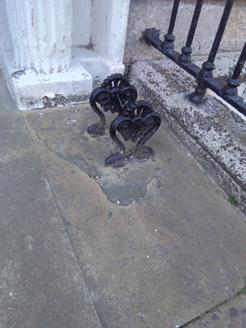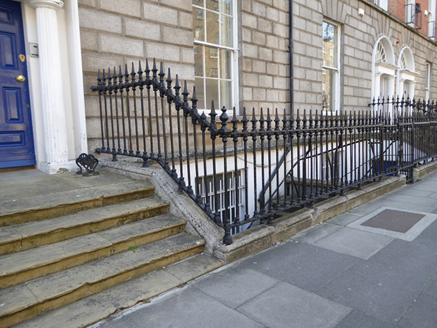Survey Data
Reg No
50100619
Rating
Regional
Categories of Special Interest
Architectural, Artistic
Original Use
House
In Use As
Office
Date
1800 - 1860
Coordinates
316924, 233298
Date Recorded
28/05/2016
Date Updated
--/--/--
Description
Attached two-bay four-storey former house over basement, built c. 1830 as one of pair with No. 41, having two-storey single-pitched return to east end of rear. Now in office use. Pitched slate roof to front span, behind brick parapet with granite coping, parapet gutters, cornice and platband, hipped roof to west end of rear and shared hipped roof to east end of rear. Brick chimneystacks to west with terracotta pot. Shared cast-iron downpipe. Flemish bond red brick walling to upper floors, rusticated granite walling to ground floor with projecting granite course above and below, and painted rendered basement walling; brown brick to rear. Square-headed window openings, diminishing in height to upper floors, with rendered reveals and painted masonry sills; round-headed stairs window opening to rear. Timber sliding sash windows, three-over-three pane to top floor, ten-over-ten pane to basement and six-over-six pane elsewhere. Decorative wrought-iron balconettes to first floor, wrought-iron window-guards to second and top floors, wrought-iron grille to basement, and decorative cast-iron balconette to first floor of rear. Apparently timber sash windows to rear, with eight-over-eight pane windows to middle floors. Round-headed doorcase with moulded surround, pro-style fluted Doric columns, plain entablature, peacock's tail fanlight and eleven-panel timber door with brass furniture. Stone-paved entrance platform with ornate cast-iron boot-scrape and five bull-nosed steps to street. Decorative spear-headed cast-iron railings on moulded granite plinth enclosing basement area, with cast-iron gate. Yard to rear of plot and two-storey flat-roofed twentieth-century office block to rearmost part of plot straddling Nos. 38-42.
Appraisal
A well retained late Georgian house forming part of a largely unified row lining the south side of Mount Street Upper. It has the rusticated stone ground floor of houses on this stretch of the street, a fine Doric doorcase with a good fanlight, and ornate metalwork to its balconettes, boot-scrape and railings. The intact setting enhances the building and contributes to the intactness of the streetscape. Laid out in the 1780s and principally developed by a Mr Osburne and David Courtney, the street was built to link the newly constructed Grand Canal to the upper-class residential developments radiating from Leinster House. Built in pairs and rows over a period of thirty years, the fifty-four houses on the street were completed by 1834. Variations within the street, such as differences in parapet heights, are a telling feature of its piecemeal development, the south side notably grander than the north, boasting granite rustication across much of the ground floor. Mount Street Upper is terminated at its east end by St. Stephen's Church, transforming what is a typical and relatively modest late-Georgian street into an urban set-piece, a key vista of Georgian Dublin.
